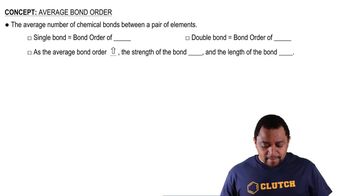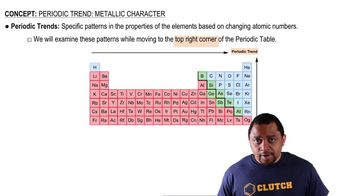Tungsten has the highest melting point of any metal in the periodic table: 3422°C. The distance between the centers of W atoms in tungsten metal is 2.74 Å. c. If you put tungsten metal under high pressure, predict what would happen to the distance between W atoms.
The experimental Bi─I bond length in bismuth triiodide, Bil3, is 2.81 Å. Based on this value and the data in Figure 7.7, predict the atomic radius of Bi.
 Verified step by step guidance
Verified step by step guidance
Verified video answer for a similar problem:
Key Concepts
Bond Length

Atomic Radius

Periodic Trends

Which of the following statements about the bonding atomic radii in Figure 7.7 is incorrect? (i) For a given period, the radii of the representative elements generally decrease from left to right across a period. (ii) The radii of the representative elements for the n = 3 period are all larger than those of the corresponding elements in the n = 2 period. (iii) For most of the representative elements, the change in radius from the n = 2 to the n = 3 period is greater than the change in radius from n = 3 to n = 4. (iv) The radii of the transition elements generally increase moving from left to right within a period. (v) The large radii of the Group 1 elements are due to their relatively small effective nuclear charges.
Estimate the As¬I bond length from the data in Figure 7.7 and compare your value to the experimental As ¬I bond length in arsenic triiodide, AsI3, 2.55 Å.
Using only the periodic table, arrange each set of atoms in order from largest to smallest: (a) Ar, As, Kr (b) Cd, Rb, Te (c) F, O, N.
Using only the periodic table, arrange each set of atoms in order of increasing radius. b. In, Sn, As
Identify each statement as true or false: (a) Cations are larger than their corresponding neutral atoms.
